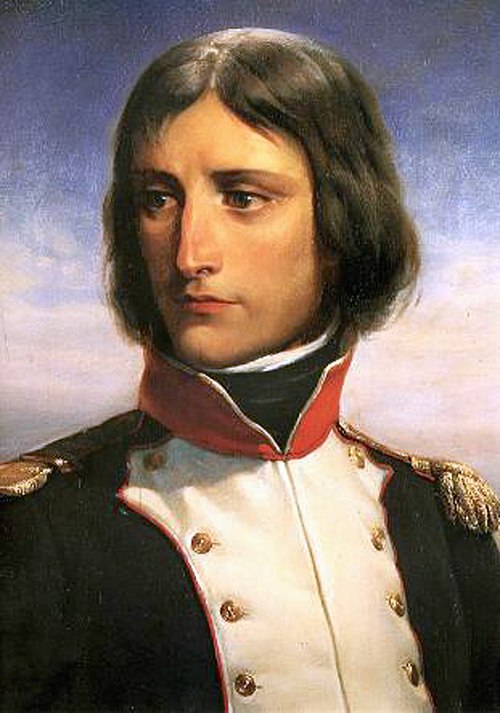
|
|
1
|
2
|
3
|
4
|
5
|
6
|
|
|
|
|

|
|
1
|
2
|
3
|
4
|
5
|
6
|
|
|
|
|
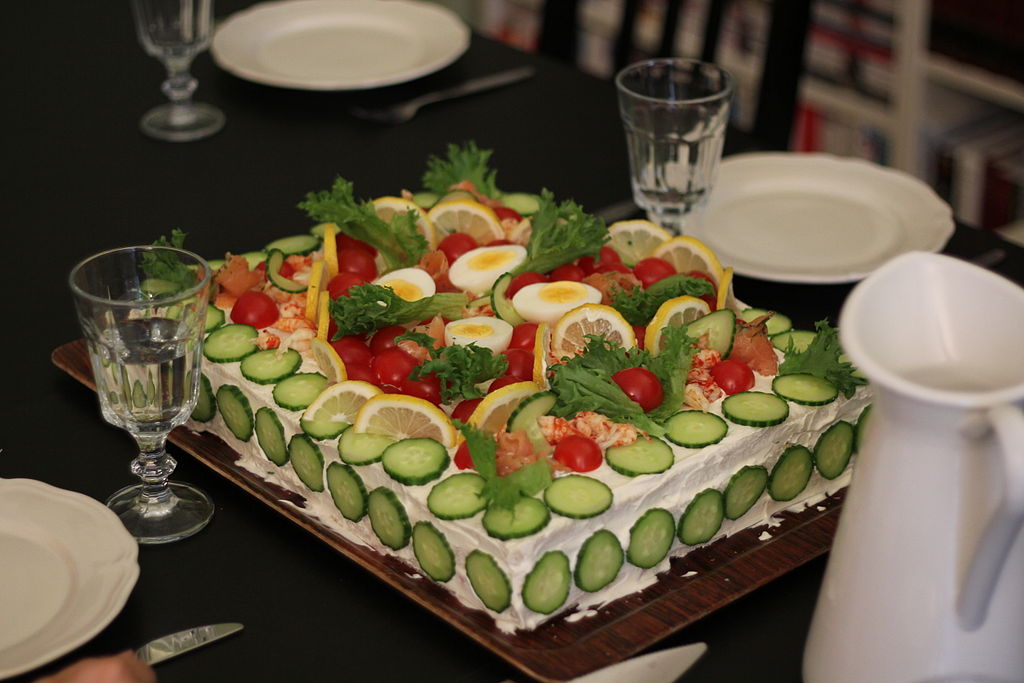
I’m lucky to be spending the month writing the second book in the Butterfly Games historical fiction series in a grand circa-1901 apartment in the Haga neighborhood of Karlstad. Yes, Karlstad—not Stockholm, not Gothenburg, but this charming mid-sized city about halfway between Stockholm and Oslo. Why here, you ask? Let me tell you.
Karlstad is a gem of a city—about 65,000 residents, twice the size of my little Connecticut town, but still cozy. And in true Swedish fashion, it’s incredibly well-connected: trains to Oslo and Stockholm, buses that reach the tiniest towns, and local transit that runs late into the night. Can you imagine?
It’s a detail I can’t overlook—especially since my son, who has autism, doesn’t drive. Back home, public transportation is… let’s just say not great. Sweden’s connectivity makes me envious in the best way.
If you’ve read an advance copy of Butterfly Games (or watched the trailer—you have watched the trailer, right?), you’ll recognize the name Carl. He’s one-third of the messy, passionate love triangle at the heart of the novel. His fictional family didn’t appear out of thin air—it’s inspired by the real noble family who ran things around here in the 1700s and 1800s. Their grand estate, Long Manor, was about fifteen miles outside the city. It’s gone. But their townhouse? Still standing, right here in central Karlstad.
Naturally, I had to pay it a visit. 🕵️♀️
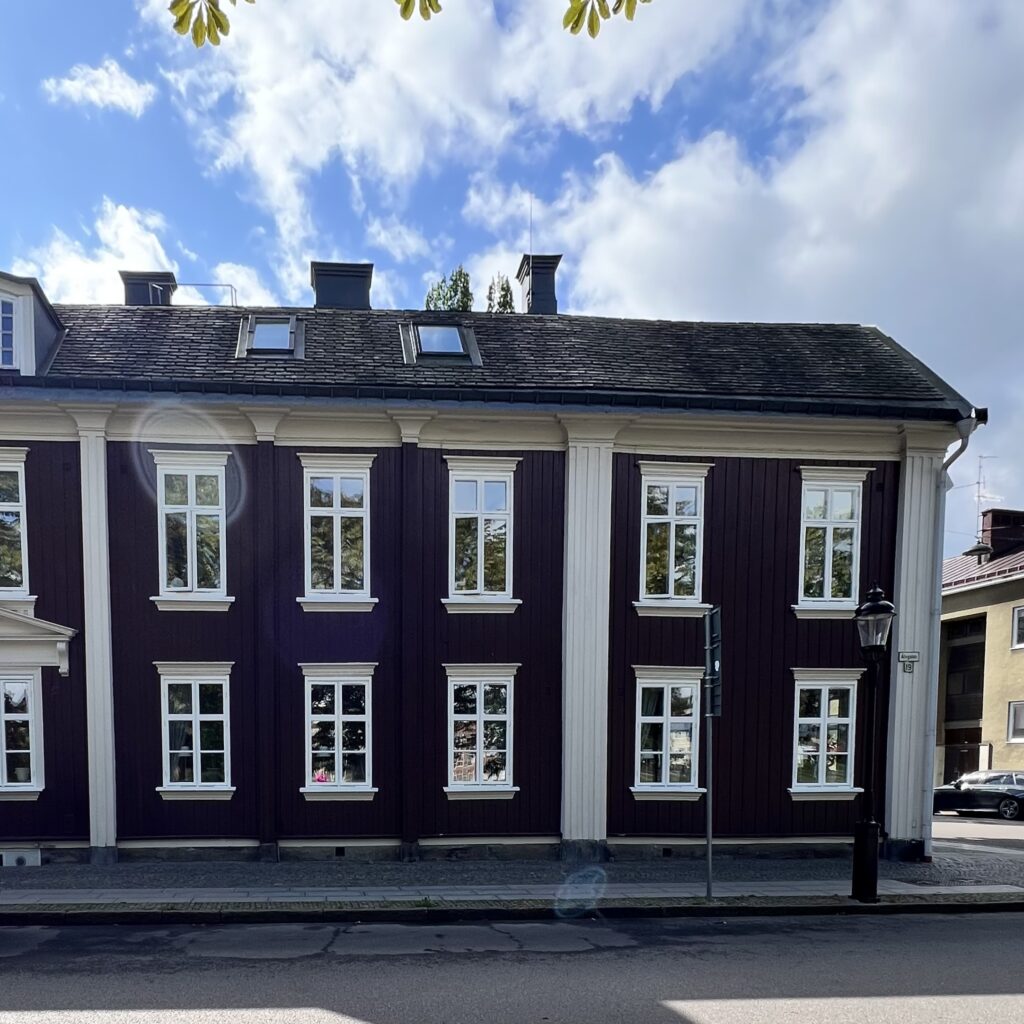
Nothing, of course, is perfect. Thanks to EU energy rules, most coffee machines shut off after 40 minutes. Forty. Minutes. As a writer who sips coffee until 5 PM, I find this borderline hostile. Back home, my Cuisinart gives me four full hours. EU: if you’re reading this, I surrender. Just let me brew in peace.
I’m all for reducing plastic waste, but the new design? Every cap is permanently attached to its bottle. Try pouring water one-handed while the cap flaps around like a bat. I’ve lost track of how many near-spills I’ve had before my first sip of coffee (assuming the machine is even still on by then).
Petty frustrations aside, there’s so much to love: cobblestone streets, misty mornings, and entire meals devoted to open-faced sandwiches. I’ve been scribbling away on Butterfly Games Book 2, letting the atmosphere seep into every scene. When I need a break, I walk along the riverside path or eat my body weight in smörgåsbord fare like this glorious smörgåstårta above. (Yes, it’s savory. Yes, it’s cake. Yes, it’s amazing.)

If you’re just joining me on this journey and wondering what Butterfly Games is all about, check out the trailer. It’s romantic, political, dangerous—and based on a true story.
👉 Watch the Butterfly Games Trailer
And don’t forget to add Butterfly Games to your Want to Read list on Goodreads!
That’s it from me this month. Next time, I’ll have more tales from Sweden, some bookish updates, and maybe—just maybe—better news about my morning coffee.
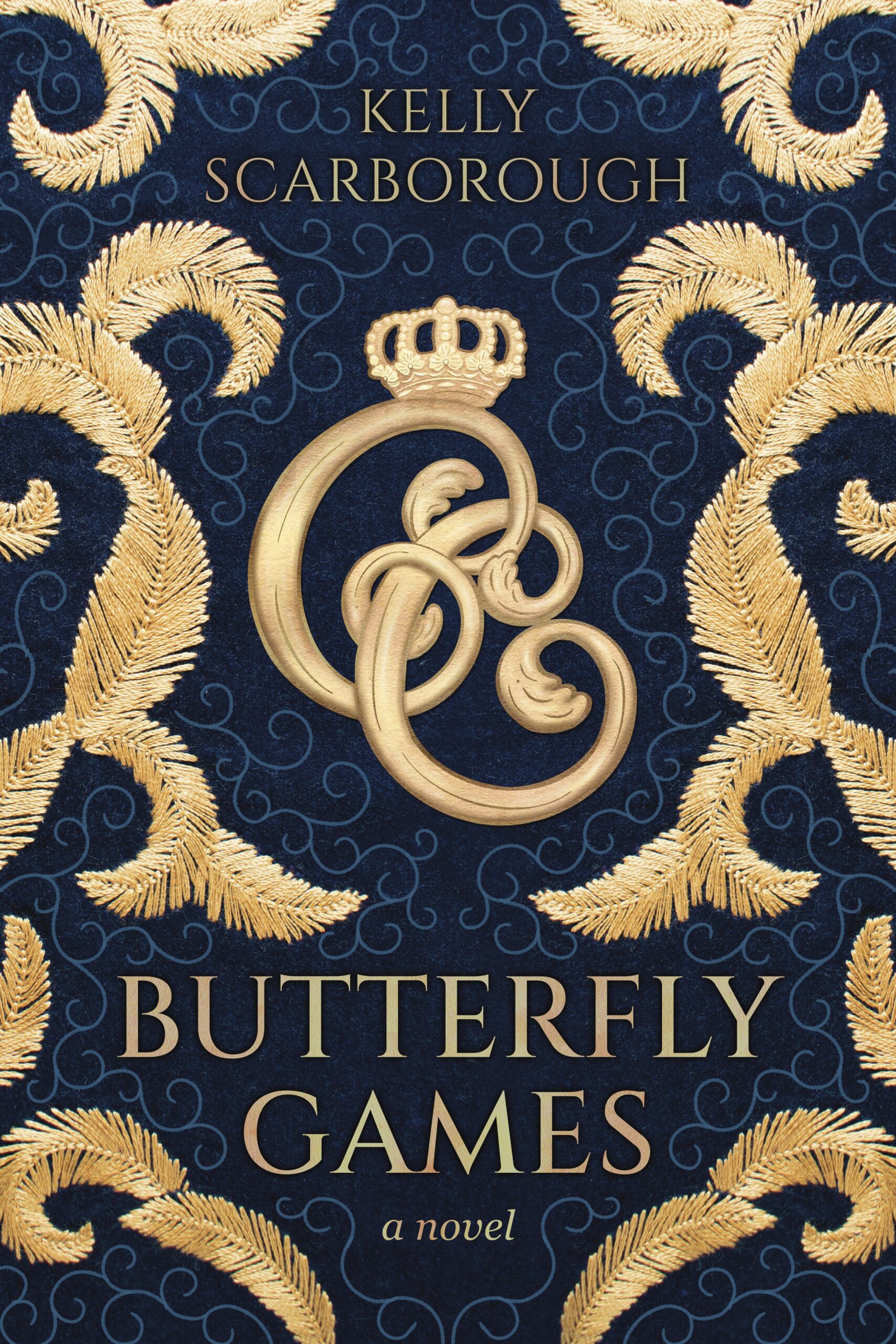
When you pick up a great historical fiction book, what’s the first thing you notice? If you’re anything like me, it’s the book cover. That first, split-second impression—do I want to hold this story in my hands? Is this a world I want to inhabit? It’s a little like meeting someone for the first time and knowing instantly: we’re going to click.
So today, let’s go behind the Butterfly Games cover—and more importantly, the gorgeously geeky process that brought it into the world. This wasn’t a stock photo find or a swipe of AI magic. This was embroidery. Real, honest-to-goodness needle-and-thread embroidery on lush, midnight blue velveteen fabric. And I have two exceptional New Zealand-based artists to thank for that: cover designer Holly Dunn and embroidery artist and costume designer Maxence Benoist.
See how it all unfolded.

Holly Dunn—whose work on historical fiction book covers you’ve probably admired without even realizing it—began, not with fabric or photos, but with her iPad. Using an app called Procreate and its collection of digital paintbrushes, she hand-drew several versions of New Zealand’s iconic silver fern, which is a symbol of resistance and strength, qualities that Jacquette, the heroine of Butterfly Games, has to call upon throughout the novel. These weren’t just sketches—they were painterly, organic, elegant. If you’ve ever tried drawing digitally, you know it’s no small feat to make something feel alive with texture and flow. Holly did just that.
Once she’d created several fern designs, she sent them off to Maxence Benoist.

Maxence is a magician with fabric. You may know her from her costume work—her Instagram is a swoon-worthy collection of embroidery, tailoring, and delightful historical flair. For Butterfly Games, she embroidered three different fern options using metallic gold thread on deep, midnight blue velveteen. Yes, you read that right. That luxurious background isn’t digitally faked; it started with real velvet. Real gold thread. Real stitches.
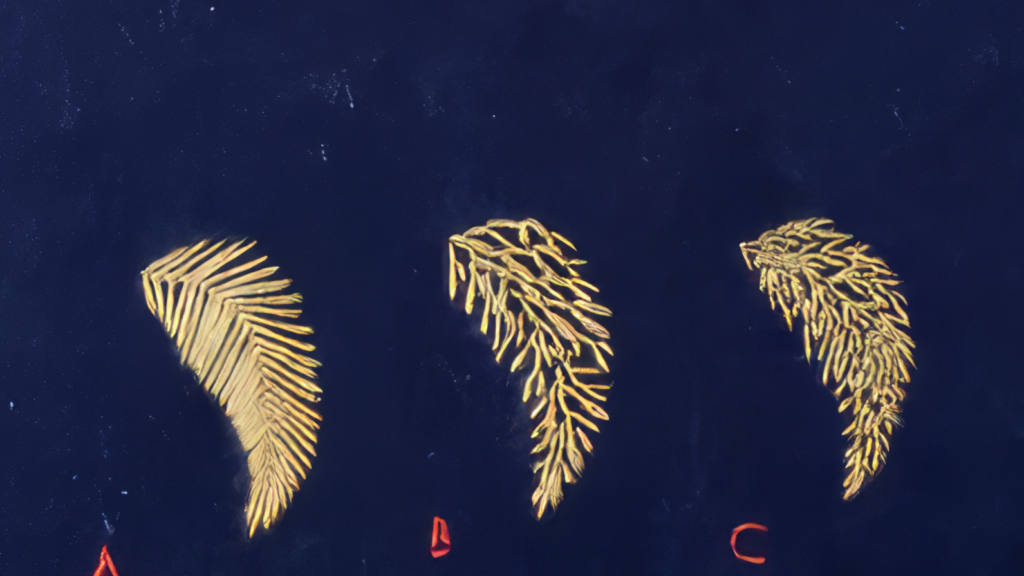
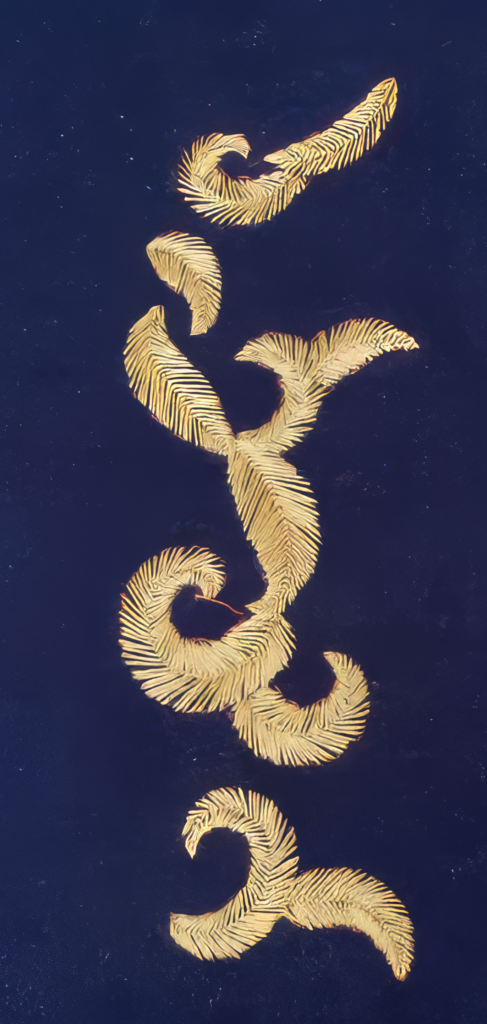
To prepare the fabric, Maxence used interfacing (a kind of backing) to stabilize the velveteen, then stitched the embroidery by hand. The results? Shimmering, dimensional ferns—each one subtly different in composition and movement.
She sent Holly photographs of the finished samples. Holly chose Option A.
Would you have picked the same one? I agonized over them, honestly. Option B has a kind of swoosh to it, like wind through leaves. Option C feels like a secret curling open. But Option A? It has presence. A quiet elegance that says: There’s power here. And beauty. And secrets.
It was exactly right for Jacquette’s story.
Once Holly had her chosen embroidery design, she photographed the fabric and incorporated the design into the full cover layout, adding a hint of texture and gold flecking to frame the text. Perfect for a historical fiction book cover.
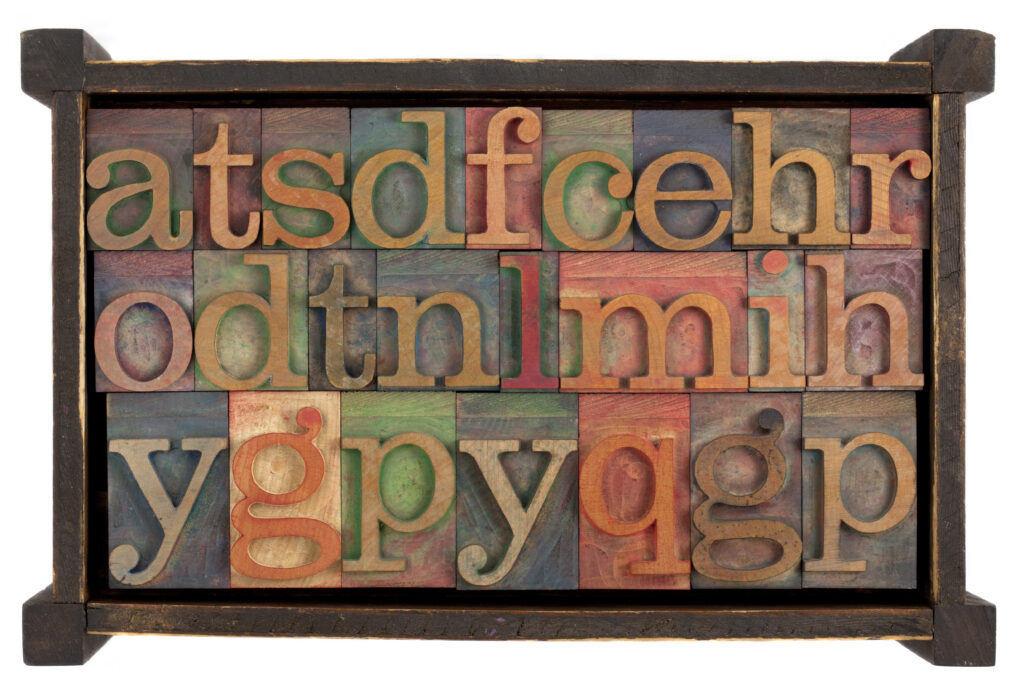
The title typeface is Cinzel—a nod to Roman inscriptional lettering, which gives that whisper of the classical—and the secondary font is Georgia, for readability and grace.
Together, they balance the ornate with the accessible. A little bit of palace. A little bit of tea and scandal.

These days, book covers can be made in many ways. Some are made from stock photography: a well-cropped face, a stormy sky, a bit of moody lighting. Some pull together illustrations of surreal dreamscapes or period costumes with a few well-placed prompts. And some, like Butterfly Games, are custom made—every detail crafted by hand, eye, and heart.
Aren’t the ones in the photo to the right beautiful?
There’s no wrong approach, truly. But I’ll admit, I have a soft spot for the tactile, the human-made. For the gold thread that catches the light. For the fern drawn one digital brushstroke at a time. For the hours that go into something you’ll hold for just a moment before turning the page.
So, tell me—which fern would you have picked?
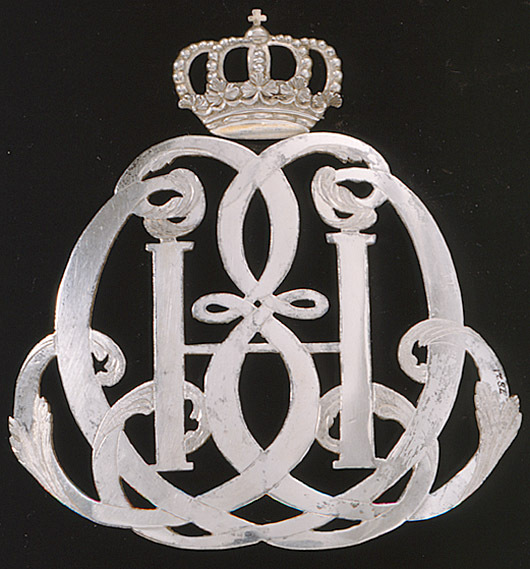
You may have noticed the golden monogram, sometimes called a cipher—or namnchiffer, in Swedish—glowing at the heart of the Butterfly Games book cover like a royal seal. This intricate cipher was hand-drawn by Holly Dunn and inspired by a real 19th-century insignia: the brooch worn by the ladies-in-waiting to the Queen of Sweden, Hedvig Elisabeth Charlotta, in the 1810s (see photo for the original).
For the fictional Queen Charlotte in Butterfly Games, Holly reimagined the cipher pin in a more lyrical, entwined style—think less strict symmetry, more secret message written in calligraphy. The cipher’s crown isn’t just decorative; it signals the power dynamics threaded through the novel: who holds influence, who wears the mask of loyalty, and who is playing the long game.
And here’s how it all looked when it came together:
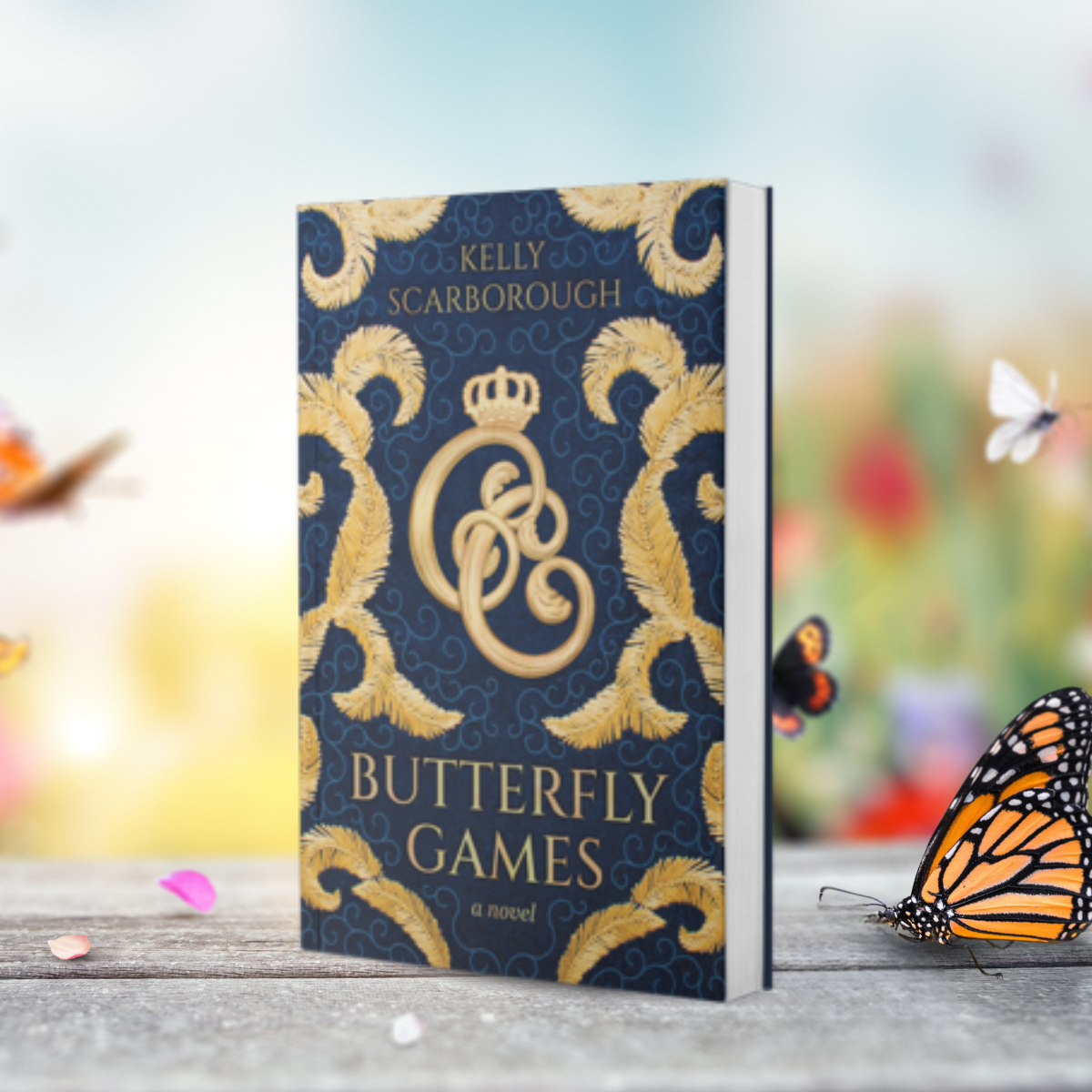
I was so privileged to draw on the talents of these two amazing artists! What do you think of their work? Right now, they are busy designing the cover for Butterfly Games Book 2, so I’d better get back to writing…
Want to get your own copy of Butterfly Games and see its beautiful cover for yourself when it’s published on January 20?
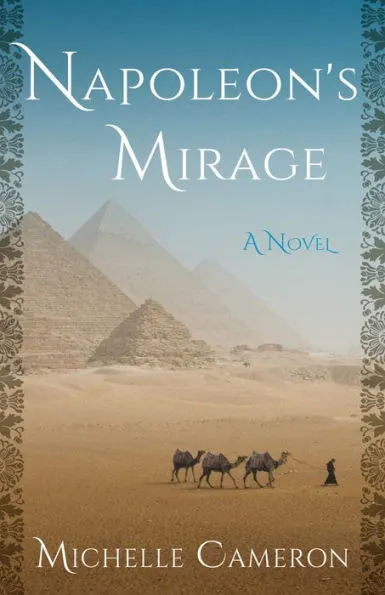
I love Napoleonic tales, especially those with far-flung settings distant from Bonaparte’s seat of power in Paris. Having already read and loved Michelle Cameron’s Beyond the Ghetto Gates, I couldn’t wait to get my hands on a copy of Napoleon’s Mirage, its sequel. Michelle’s new release finds our heroine, Mirelle, ostracized—by the community, her best friend, even her mother—and labeled a “ruined woman.” As her efforts to nurture her family’s legacy are thwarted, she realizes she may have lost her last chance at love.
I was fortunate to attend two talks by Michelle in New York and couldn’t resist asking her a few questions and sharing everything I learned with you.
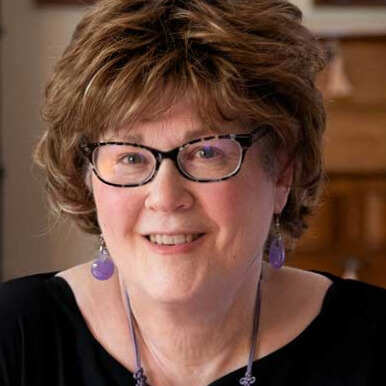
Michelle: When I was about a third of the way through writing my first novel, which was published in 2009, I attended a writing conference and was challenged to say why I couldn’t finish my first draft.
My response—I had a full-time job, was mother to two young children, and needed to provide editing help to my husband as he worked toward his advanced degrees—had everyone in the group nodding. Everyone, that is, but the facilitator.
She had two questions for me. The first—after learning I was a morning person—was “how early can you get up?” The second, which resonated powerfully with me, was “how much do you want it?”
That second question has been a kind of motto for me, encouraging me to wake up every morning at 4:30 am to write, to weather disappointments in publishing and continue to persevere, to leave the security of a full-time job, and finally, to take a chance on partnering in a company that offers creative writing to everyone from children through teens and adults. I’m extremely proud of the writers I’ve helped along the way and the fact that I have five published books to my credit.
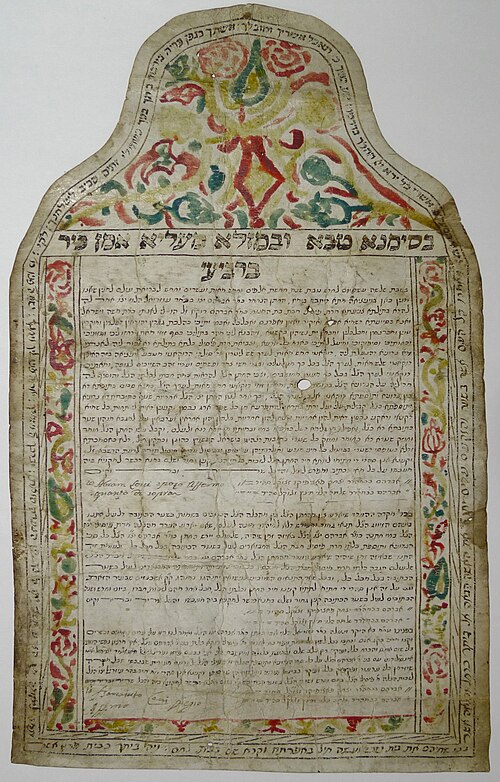
Michelle: I set Beyond the Ghetto Gates in Ancona because it was the place where Napoleon first discovered that the Jewish population was locked behind ghetto gates from sundown to sunrise each day. I had never heard of this before. While researching this harbor city, I discovered that, at the time, it was the world center of illuminated ketubah (Jewish marriage certificate) creation and that there had been a miracle portrait of the Virgin Mother in the mountaintop cathedral there. These two facts became critical literary devices for the novel.
Michelle: Daniel and Christophe’s first story ended in Paris after Beyond the Ghetto Gates. I wanted their story to continue and became fascinated by Napoleon’s march into Egypt and Israel. During his attempt to cut off the British trade routes, he made many uncharacteristic mistakes, which foreshadowed his fatal errors in Russia. So much has been written about the Russian Campaign, and Egypt was the perfect setting for Daniel, once a hero‑worshipper of Napoleon, to grow disillusioned as he witnesses war’s harsh toll and moral compromises.
Michelle: Mirelle, who has a talent for accounts, is trying to rescue the family business, which creates gorgeous ketubot. I discovered during research that Ancona was the center of illuminated ketubah production! That artistic legacy resonated deeply with me.
Michelle: Christophe remains the bold, adventurous spirit of the first book, but he finds deeper purpose and even sacrifice. Mirelle faces ostracism back home and learns the cost of ambition — her mastery of the ketubah workshop is challenged by community backlash and heavy taxes. Daniel, as said above, became disillusioned with Bonaparte, which caused him to make some momentous, life-altering decisions.
Michelle: The French scientists with Napoleon coined the term “mirage” to describe optical illusions in the desert. Napoleon’s Egyptian mission itself was a mirage — a grand dream that ultimately was illusionary. The title reflects the alluring but deceptive nature of political and personal ambition.
Michelle: It reflects the historical and personal complexities I live with. That kind of tension — duty versus love, tradition versus progress — is central to both Mirelle’s and Francesca’s narratives in Ghetto Gates, and has echoes in Mirage amid the clash of three religions in Egypt.
Michelle: The first three months are devoted solely to research. Beyond that, drafting comes — but then major rewrites follow. Both Ghetto Gates and Mirage were revised multiple times. Ghetto Gates even had three different endings before beta‑reader insight — one suggestion, by my son Alex, led to the version published.
Michelle: It’s a fusion of love, ambition, identity, and morality under a desert sun. We follow characters wrestling with warfare’s allure and fallout, interfaith connection and alienation, and the sheen of historical greatness that masks quiet personal tragedy. The Egyptian setting amplifies those tensions — beauty and brutality intertwined.
Michelle: Right now, I’m immersed in a new novel set in Shakespeare’s London — again with Jewish/Converso themes unfolding behind the scenes.
Michelle: Mirage stands on its own — you can begin here, immersed in Egypt and Israel in 1799. But if you start with Ghetto Gates, you’ll deepen your bond with the characters, witness their silent vows, their fractures, and understand the roots of their journeys. Either way, expect immersive historical textures and human complexity.

Napoleon’s Mirage is available wherever books are sold; find links HERE. Dive in— these are stories that affirm, challenge, and linger long after the final page.
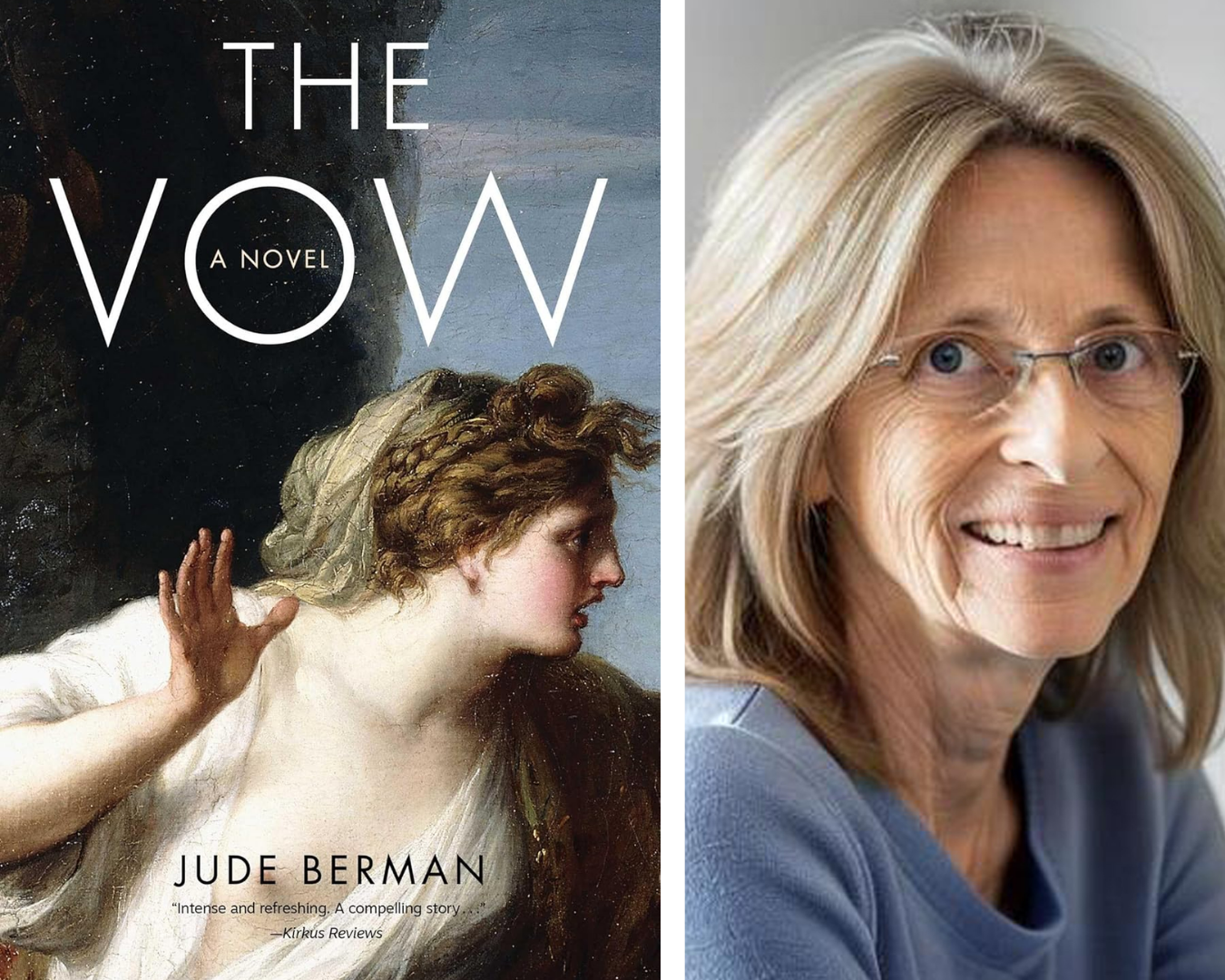
This month, I had the absolute pleasure of interviewing Jude Berman—historian, novelist, and all-around master of time travel (of the literary kind, that is). Her novel The Vow reimagines the life of 18th-century artist Angelica Kauffman, a name that deserves far more spotlight than it gets.
What follows is a warm, fascinating, and occasionally surprising conversation about art, ambition, and what it means to rewrite the past—just a little.
Jude: I stumbled across Angelica many years ago through a series of mystical coincidences and was immediately drawn in. She was talented and highly ambitious, and somehow managed to rise to prominence in a man’s world without becoming a cautionary tale. Her life was filled with drama—rags-to-riches fame, scandal, heartbreak—and yet, like so many early women artists, she was lost to history until quite recently. Even now most people don’t know who she is. I want to change that.
Jude: For me, it’s a point of honor to stick closely to the known facts. Over the centuries, historians have come up with their own interpretations, and in the 19th century—before Angelica was forgotten—a bestseller was written about her life. When I read it, and also read the actual letters she wrote to Wolfgang von Goethe, I was convinced that book got it wrong. So I set out to retell her story—still as fiction but reflecting what I believe to be closer to the truth of her heart.
Jude: It comes down to emotional truth. I wasn’t interested in writing a textbook—I wanted to explore what it felt like to be Angelica Kauffman: a woman with talent and ambition, navigating the art world, love, and the weight of expectations and then growing into maturity. I stuck with all the known facts of her life but let my creativity flow when it came to describing her inner world.
Jude: I did a lot of digging! And I have to say, my doctorate in educational research came in handy. I started pre-Internet, and more and more information became available as I was writing. I was constantly finding ways to pop in one or another detail as I discovered it. I probably know more about the price of pigments in 1775 than anyone needs to!
Jude: Absolutely. She was a trailblazer, and I didn’t want to flatten her into a sentimental figurehead. She was complicated. She made bold choices and also had to face disappointments and compromise. I wanted to honor both her strengths and her vulnerabilities.
Jude: Angelica lived in a world where men held virtually all the institutional and personal power. The law didn’t even permit a married woman to own her own paintings. Men naturally assumed they had access to Angelica—professionally, romantically, spiritually. I think it’s hard for women—especially younger women—today to imagine living with those constraints. I tried to show how the power dynamics of her time shaped her decisions, including the vows she made to herself and others.
Jude: That’s one of the joys—and challenges—of historical fiction. The public record tells us where she lived, what she painted, whom she associated with. But her inner world? That’s an invisible layer. I leaned on her letters because they reflected her own thoughts. Her mind was, in many ways, her real canvas. I also drew on my own experience as an artist, especially with respect to how colors affect us.
Jude: I like to think she’d be intrigued—and maybe flattered. She might raise a skeptical eyebrow at some of the more speculative moments, but she was a portraitist, after all. She understood that every portrait—written or painted—blends truth and interpretation.
Jude: That history isn’t just a list of dates and names—it’s full of beating hearts and difficult choices. And that women like Angelica Kauffman weren’t just muses or lovers or wives in a world of men. They were pioneers, and they can live on through our remembering of them.
The Vow is available wherever books are sold; find links HERE. If you love art, untold stories, or simply a beautifully crafted novel that will transport you—add it to your TBR. Trust me, Angelica’s world is one you’ll want to linger in.